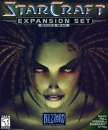RolStoppable said:
No, you don't understand me correctly. The Gamepad is the central visible factor that sank the console and the other main factor for failure that isn't in plain sight is Shigeru Miyamoto. Hence why not only the poor QB had to go in order to right the ship, but the head coach as well. As I've explained before, Miyamoto made the major calls for the Wii U on both hardware and software. I don't need to go over bizarre software decisions because you've already outlined a bunch of blunders in your own post. As I've also said before, the Wii U was a repackaging of GameCube ideas. The GC to GBA connectivity allowed up to five screens at once. The Wii U was launched with only one additional screen, but Nintendo planned to have the console support two Gamepads at once eventually. What the GameCube and Wii U also have in common are bizarre software decisions for major first party titles. The Wind Waker's artstyle was highly controversial, Super Mario Sunshine also went in a... unique direction, Mario Kart introduced a core feature that wasn't used ever again, the Donkey Kong platformer was controlled with the bongo controller. And of course, Miyamoto was the general producer at the time and called the shots for overall software development. This probably raises the question why the Wii could succeed with Miyamoto as general producer, but that's easily explained by Nintendo's business suits calling the direction for hardware and software after the disappointing results of the GameCube. That's why games were made to sell, and decisions were based on historic sales data. With the Wii's success, there was no financial pressure anymore, so the leash got loosened on Miyamoto. He went straight back to embracing his darling console, the GameCube, so Nintendo's fortunes went south again. Wii Sports Club and it's baffling release strategy is a consequence of Miyamoto not planning a Wii Sports 3 at all. It got put together quickly in light of terrible Wii U sales and it was so urgent to have something available that it was first released in digital pieces. But by the time that Nintendo's business side could react, it was essentially already over for the Wii U. The GC to GBA connectivity as well as the Gamepad fall into the category of Miyamoto enjoying it to create products that are more toy than game. In hindsight it's undeniable that Miyamoto had not enough good ideas to justify the Gamepad's existence. It was a controller that was put out in hopes that other developers would figure out something great to do with it. It wasn't unlike "games" like Wii Music or the Japan-exclusive Mario Artist series where it was up to the imagination of others (in this case, consumers) to make something worthwhile out of the product. Anyway, the bottom line is that Nintendo wouldn't have made and launched the Wii U if historic sales data had been considered. The Wii U was a culmination of failed ideas while omitting ideas that had succeeded, whether that concerns the hardware itself or many of the games that were made for it or not made for it. |
Nintendo's original plan was to use one Gamepad IIRC. They announced additional support for another Gamepad, but that was only after pretty significant backlash, and they clearly didn't have any games in the pipeline to use that (although the hardware itself was I think able to support 4 video streams pretty early on). The idea was similar to the GBA, but a little bit different. Since the Wii-motes were still supported, the idea was for players 2-5 to use motion controls. So, in a game like Zelda Adventure Nintendo Land, lesser experienced players can be playing a simpler motion control game whereas the Screen player could be playing something a bit more complex. That's the advantage (in some cases) that it had. Not only could people have a different screen to use, but also a completely different control style. I think there was a lot more that could have been done with that concept.
I'm not going to go into the Miyamoto stuff, because I just don't know much about the behind the scenes stuff. I'll take your word for it, but I don't think that's all that relevant to the discussion. I'm more interested in the decisions themselves, and not so much with the person making them.
We seem to be in agreement that there were major issues with software, and at least some of those issues were not due to the Gamepad, and that there were bad business decisions which were also not directly related to the Gamepad, and that the Gamepad itself was problematic to at least some degree. I would assume we'd also agree that the overall marketing was poor.
The only disagreement is how much of the problem was caused by each factor. I don't think there's any way to accurately determine that. Do you?
























































